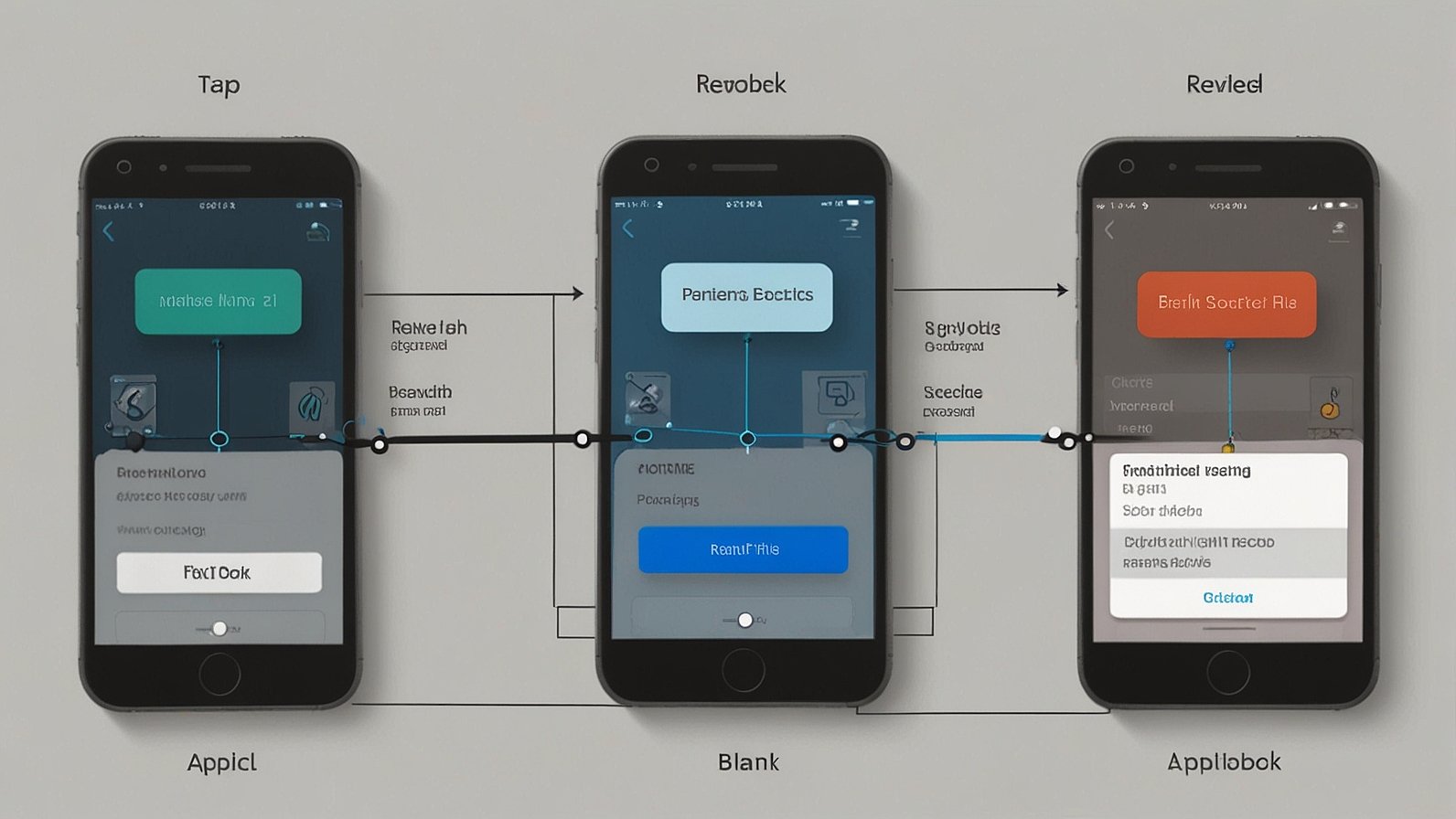You’ve just executed your meticulously built SSIS package, expecting the satisfying green “Success” checkmark. Instead, you’re greeted with a frustrating failure and an error log that might as well be a cryptic ancient script. Buried within it is a reference to something you found online: SSIS 469. Sounds official, doesn’t it? Like a specific module or a version you missed. Here’s the surprising truth: it’s not. Unraveling the mystery of SSIS 469 is less about finding a single manual and more about becoming a digital detective in the world of data integration.
Think of “SSIS 469” as a community-generated bat signal. It’s an informal label that seasoned ETL developers use to point toward a category of complex, often infuriating challenges within SQL Server Integration Services. This term isn’t found in Microsoft’s official documentation; instead, it’s a shorthand beacon that guides us toward solutions for deep-seated data type mismatches, validation failures, and constraint violations. This article will be your guide, transforming that confusion into clarity and equipping you with the skills to not just fix these errors but to build more resilient data workflows.
What Exactly Is SSIS 469? Demystifying the Myth
Let’s be perfectly clear from the outset. If you search Microsoft’s official SSIS documentation for “469,” you will not find a dedicated section. SQL Server Integration Services is released with full version numbers like “SSIS in SQL Server 2019,” and its errors are documented with specific codes like DTS_E_....
So, what does SSIS 469 represent? Practically, it has evolved into an umbrella term used in forums, blog posts, and tutorial sites. It acts as a tag for content that addresses a specific class of SSIS headaches:
- Advanced Data Flow Issues: Problems that occur deep within the data flow pipeline, often related to how data is transformed and moved between components.
- Metadata and Validation Errors: Issues where the structure of the data (its metadata) at a destination doesn’t align with what a transformation or source is expecting.
- Performance Bottlenecks in Complex Pipelines: Challenges that arise when moving massive volumes of data through intricate transformation logic.
In essence, SSIS 469 is a community-driven code for “Hey, here’s a tough one that isn’t solved by a simple configuration change.” It signifies a move beyond beginner-level issues into the realm of advanced ETL troubleshooting.
The Usual Suspects: Common SSIS 469 Scenarios and Errors
When developers invoke the term SSIS 469, they are typically battling one of a few common yet complex scenarios. Understanding these is the first step toward a solution.
The Dreaded Data Type Mismatch
This is the quintessential SSIS 469 challenge. Imagine a pipe designed to carry water suddenly being asked to carry concrete. The system will clog, break, or fail. Similarly, an SSIS data flow will fail if you try to insert a string into an integer column or a date into a decimal field.
- Why it happens: Source systems often have loosely defined data types (e.g., everything is
VARCHAR). Destination data warehouses enforce strict, optimized types (e.g.,INT,DATETIME2,DECIMAL(18,2)). The SSIS pipeline must explicitly convert and validate these types, and if it can’t, it fails. - The hidden culprit: Sometimes the error doesn’t occur on every row. A column might contain 100,000 perfect integers and one single
NULLor the text “N/A,” which cannot be converted to an integer, causing the entire package to fail.
Validation and Constraint Violations
Your data looks correct, but the database itself rejects it. This is often a destination-side issue.
- Primary Key/Unique Constraint Violations: Trying to insert a duplicate value into a column that must be unique.
- Foreign Key Violations: Inserting a record that references a non-existent key in another table.
- Check Constraints: Violating a business rule defined at the database level (e.g., a
Salarycolumn must be greater than 0).
These errors can be particularly tricky because they may not manifest during design time. They only explode during execution when the database engine itself enforces its rules.
Script Component Complexity
The Script Component is a powerful tool in SSIS that allows for custom C# or VB.NET code. With great power comes great complexity, and it’s a common source of SSIS 469-level errors.
- Unexpected NULL references: Code that doesn’t handle
DBNull.Valueproperly. - Incorrect logic: Complex business rules implemented incorrectly within the script.
- Performance issues: Inefficient code that brings a high-volume data flow to a grinding halt.
Also Read: How someboringsite.com Can Transform Your Digital Presence
Your Tactical Playbook: Solving SSIS 469 Problems
Fixing these issues requires a methodical approach. Blindly changing settings will only lead to more frustration. Follow this playbook instead.
Step 1: Interrogate the Error Logs
Your first and most important clue is always the error message. Don’t just read the top-level failure. Dive deep into the Output window or the SSIS log.
- Locate the Exact Error Code: Look for a true SSIS error code (e.g.,
DTS_E_PIPELINE_COMPONENT_FAILEDorDTS_E_CONNECTIONMANAGER_NOTFOUND). This code is your direct link to Microsoft’s official documentation. - Identify the Failing Component: The error message will almost always tell you which component in your data flow failed (e.g., “OLE DB Destination [123]” or “Derived Column [456]”).
- Check the Column and Row: Advanced logging can be configured to tell you the exact row that caused the failure. This is invaluable.
Step 2: Embrace Data Viewing and Data Taps
SSIS provides fantastic tools for spying on your data mid-flow.
- Data Viewers: Right-click on the path between two components and select “Enable Data Viewer.” Execute the package. A window will pop up, showing you the data passing through that point. You can watch it row by row to spot the problematic data.
- Diagnostic Data Taps (in SSISDB): For packages deployed to the SSIS Catalog, you can use Data Taps. These allow you to dump the data from a specific point in the data flow to a file for later analysis, which is perfect for debugging packages that run on a server.
Step 3: Implement Defensive Data Transformation
Instead of hoping your data is clean, assume it’s dirty and build your package to handle it.
- Use Explicit Conversions: Never rely on implicit conversion. Use the Data Conversion Transformation component to explicitly change a column from, say,
DT_STRtoDT_I4(string to integer). This gives you clear control and better error handling. - Leverage the Conditional Split: This component is your best friend. Use it to filter out bad rows before they hit your destination. Route rows that fail a validation check (e.g.,
ISNULL(MyColumn)or!ISNUMBER(MyColumn)) to an error output where you can log them to a table or a file for later inspection.
| Strategy | Component | Best For | Pro Tip | ||
|---|---|---|---|---|---|
| Explicit Conversion | Data Conversion Transformation | Fixing predictable data type mismatches | Creates a new column. Remember to redirect your data flow to use the new, clean column. | ||
| Error Row Redirect | Error Output (on Destinations) | Handling unexpected conversion failures | Lets the component fail but captures the bad row instead of failing the whole package. | ||
| Pre-emptive Filtering | Conditional Split | Isolating and removing known bad data | Use expressions like `ISNULL(MyCol) | MyCol == “”` to catch empty values before they cause issues. |
Step 4: Validate and Test in Isolation
When you’ve identified a suspect component, test it in isolation.
- Disable other parts of your data flow. Start from the source and enable one component at a time, running the package after each enable. This helps you pinpoint exactly where the failure is introduced.
- Use a Flat File Destination right after a tricky transformation to write the results to a CSV file. Inspect the file manually to verify the data looks correct before you try to load it into your final destination.
Building Fortified Packages: Prevention Over Cure
The best way to solve an SSIS 469 error is to never have it happen in the first place. Integrate these practices into your development lifecycle.
- Profile Your Source Data: Before writing a single line of package logic, understand your data. Use tools like SQL Server’s Data Profiler Task to see the actual state of your source columns—their data types, patterns, percentages of NULLs, and value distributions.
- Implement Robust Logging: Don’t rely on the default logging. Configure SSIS to log extensive details to a SQL Server table or files. Log the package name, execution ID, start/end times, and critical error messages. This creates an audit trail for every failure.
- Master the SSIS Catalog (SSISDB): If you’re not already using it, deploy your projects to the SSIS Catalog. It provides a centralized management point, far superior environment configuration (parameters vs. configurations), and built-in, detailed logging and reporting.
You May Also Read: Appfordown: Your Secret Weapon for Mental Clarity in a Chaotic World
FAQs
Is SSIS 469 an official Microsoft update or service pack?
No, it is not. “SSIS 469” is an informal, community-adopted term used to label a category of complex troubleshooting scenarios within SQL Server Integration Services. Always refer to official Microsoft version numbers (e.g., SQL Server 2019) for product information.
My package fails with a conversion error. How can I find the exact row causing the problem?
The most effective method is to enable a Data Viewer on the data path leading into the failing component. When you run the package, you can watch the data flow and see the exact row that causes the failure. For production debugging, configure detailed logging or use Diagnostic Data Taps in the SSISDB.
What’s the difference between using Data Conversion and handling errors in the Error Output?
Data Conversion is a proactive transformation—you are actively changing the data type of a column for the entire data flow. The Error Output is reactive—it catches rows that a component fails to process and allows you to redirect them for logging or repair instead of failing the entire package.
Should I always redirect error rows to avoid package failures?
While redirecting errors prevents package failure, it is not a best practice to simply ignore them. You should always log redirected error rows to a table or file. Periodically analyze these logs to identify systematic data quality issues at the source that need to be fixed.
How can I prevent constraint violations from happening during an insert?
Implement a lookup in your data flow to check for the existence of related keys before inserting data. For potential duplicates, use conditional logic or grouping to ensure you are only sending unique records to the destination. Sometimes, a “staging” load followed by a SQL statement that handles the merge is the cleanest solution.
Can poor package design contribute to these complex errors?
Absolutely. Overly complex data flows with dozens of transformations are harder to debug. Breaking a large package into smaller, more manageable child packages can isolate functionality and make finding the source of an error much easier.
Where can I find official, authoritative information on SSIS errors?
The definitive source is the Microsoft Docs library. Search for “SSIS Error and Message Reference” or the specific DTS_E_* error code you encounter. This will provide the official explanation and suggested resolutions from the development team.










